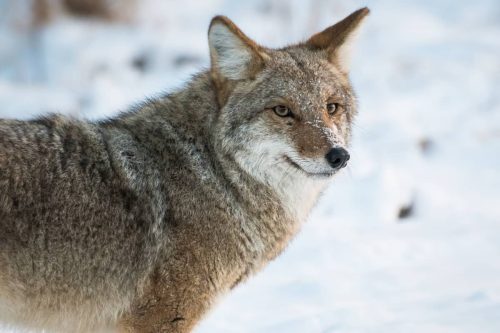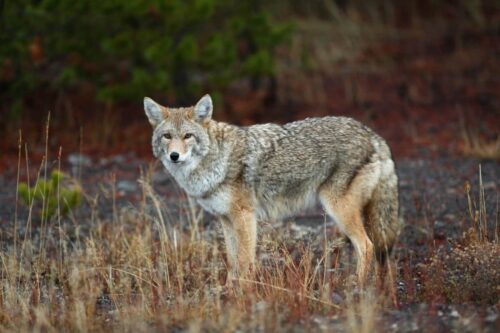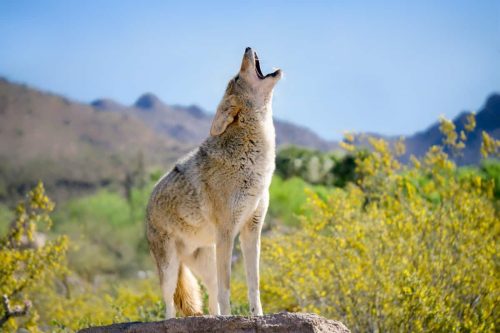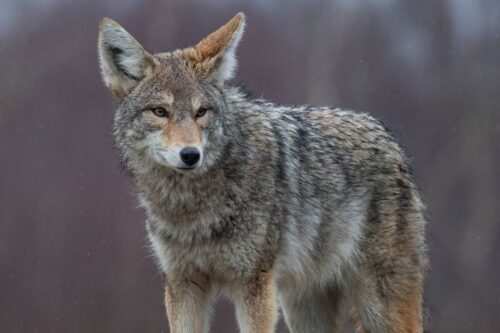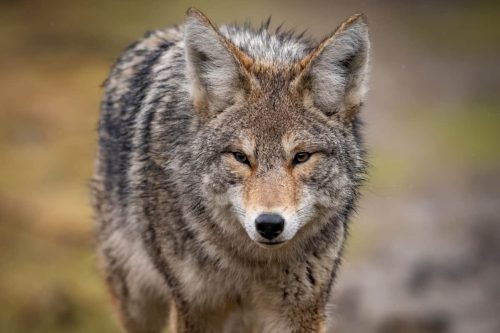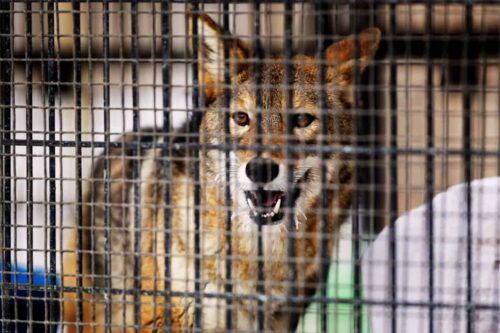How Big Are Coyotes? – Coyote Size Comparison To Other Animals
The coyote or prairie wolf belongs to the Canidae family of dogs. It is a medium-sized wild canine whose name has been originated from the Aztec coyote. It was mainly found in the southern Alaska region and gradually penetrated into the Central American region to the whole United States of America and Canada. When it comes to coyote size, it depends upon some factors like gender, region, genes, age, etc.
Generally, coyotes are considered very slender and fast-running dogs. On average, the coyote is almost 24 inches tall, weigh around 20 to 50 pounds, and is 1 to 1.5 meter long including its 35 to 40 cm long tail. By keeping these dimensions in mind, you may consider it almost the same as a pet dog. It comes with very long and coarse fur as well as a very bushy tail. The coyote size varies a lot from one region to another. You can find the biggest coyote in eastern Canada or Northeastern USA. In this article, we are going to explain in detail how big are coyotes.
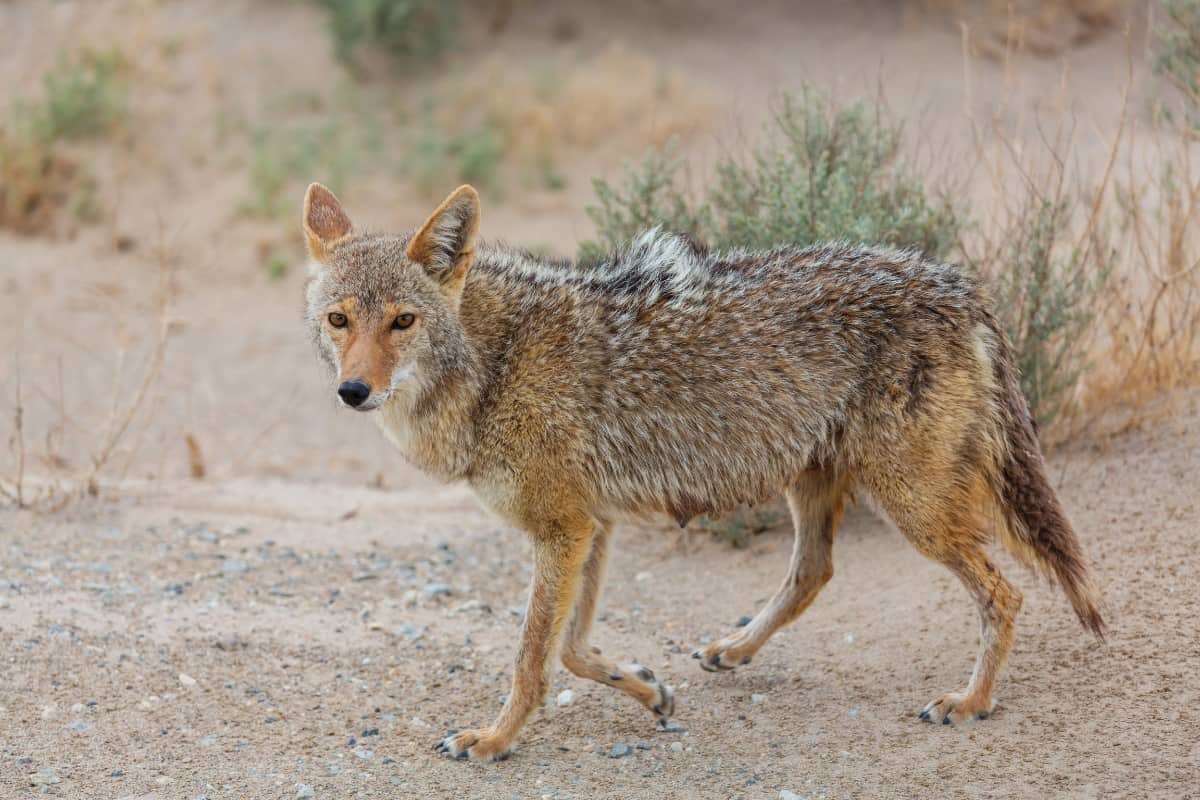
Contents
How big are coyotes?
Several factors impact the overall size of the coyote. It actually depends upon coyote health, age, gender, genes, etc. Typically, a full-grown coyote is around 3 feet long and it could have a maximum height of 2 feet with this length. This size fully grown coyote could weigh around 30 pounds.
When it comes to size differences on the basis of gender, male coyotes are larger as well as heavier than female coyotes. Health also plays a very significant role in the overall size and weight of coyotes. Some people have also reported very heavy coyotes weighing around 60, 70, and in some cases even 100 pounds in the wilderness.
Coyote pups’ size and weight
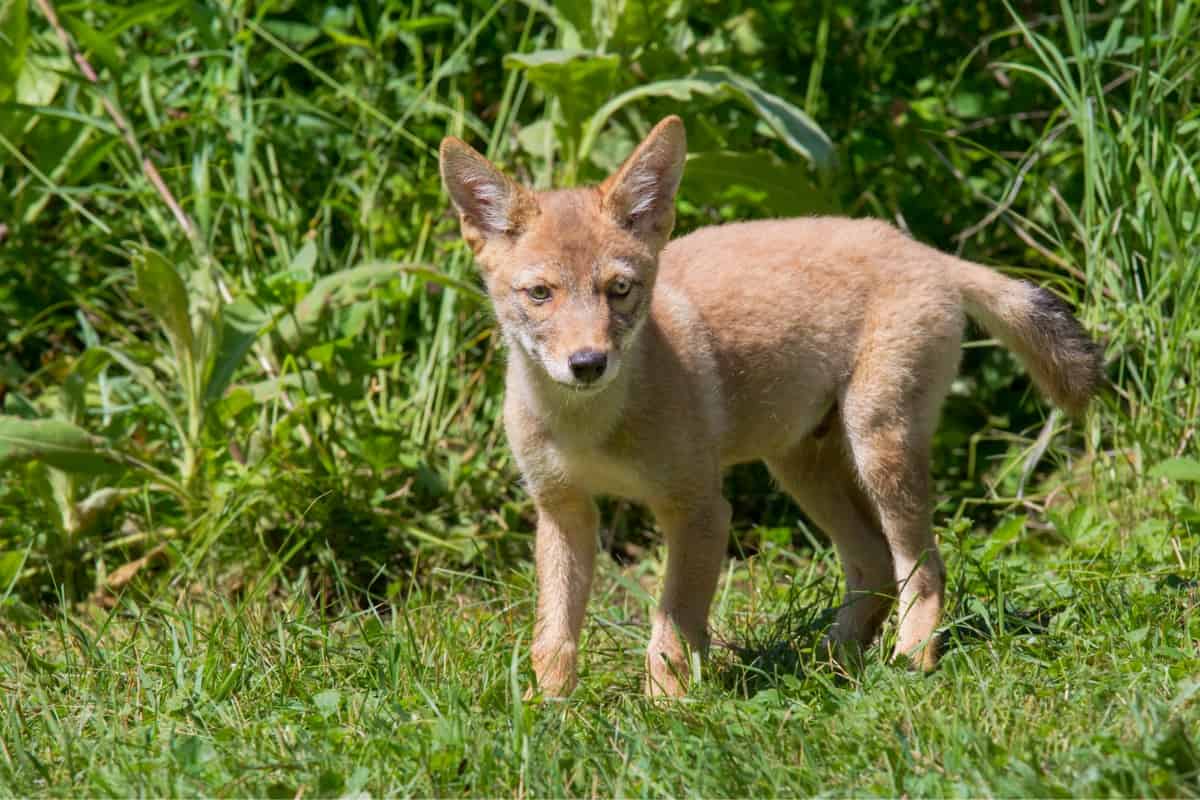
At the time of birth, coyote pups have very less weight. It could be a maximum of half a pound. In the first nine months of their age, they gain weight very rapidly and easily reach a weight of around 18 to 20 pounds. However, the nine-month-old coyote also starts erupting teeth and which could be painful and also results in the reduction of their weight.
After getting their teeth, they are good for hunting and consume a lot of protein and started gaining weight and size. They are grown to their full size when they become 12 months old. At this age, they become very good at their hunting and social interaction links with others.
Age-wise weight of coyote
The weight of the coyote increases gradually as they grow older. Newborn coyotes have a very small weight. If it is fully healthy then it could be anywhere around 8 to 10 ounces or 0.5 pounds in weight. The average weight of the coyote is around 35 pounds. The weight actually varies between 30 to 50 pounds as it mainly depends upon its health.
Gender also plays a very vital role and female coyotes are less bulky than male coyotes. The weight of the coyote also depends upon the lifestyle of the coyote. If the coyote is very solitary by nature then it might be undernourished and have very less weight than the average weight of an adult coyote. However, if the coyote is living in social groups, then it might be in very good health and agile.
Coyote size difference on the basis of gender
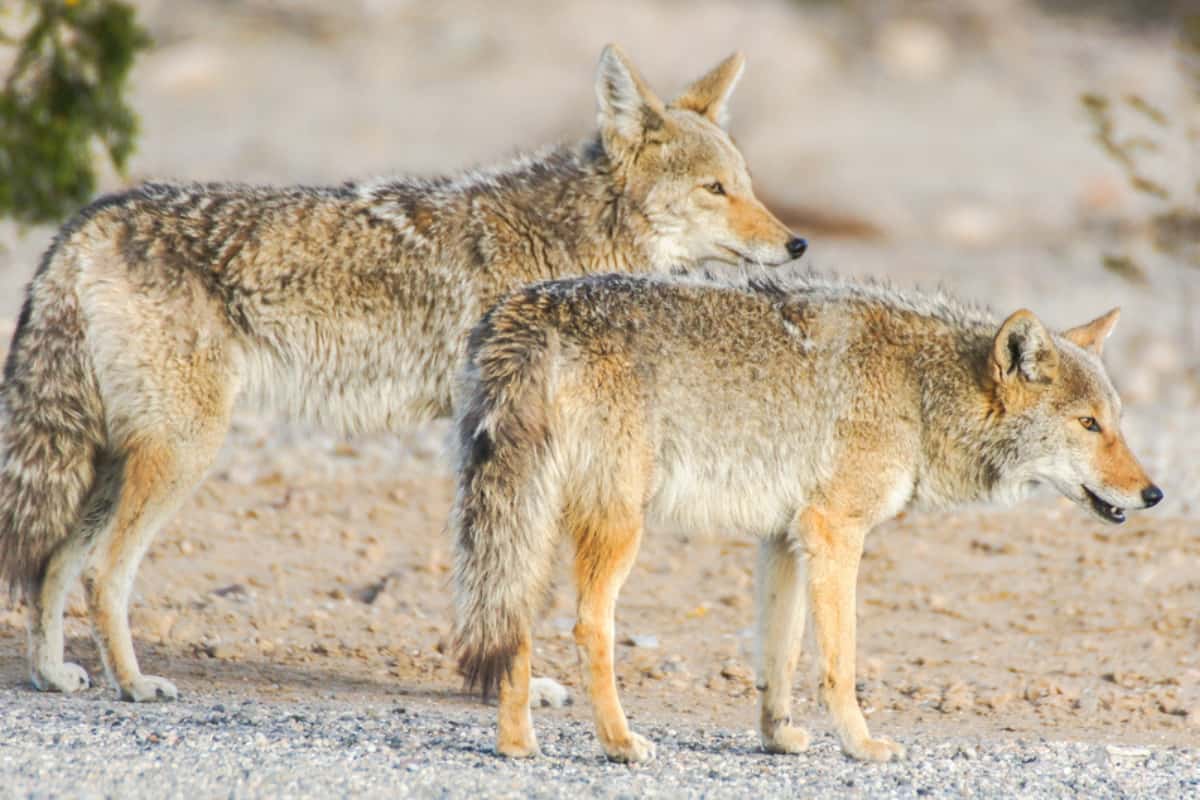
As we have already mentioned, the size and weight also vary on the basis of their gender. Male coyotes are larger and heavier than female coyotes. Male coyotes are slightly bigger, larger, heavier, and taller than their female counterparts. There might be a huge difference in terms of their weight. Male coyotes could be 15 to 20 pounds bulkier than female coyotes when they reach their adult age.
Nevertheless, there might be an exception in the case of an alpha female coyote. Alpha females lead the pack from the front and also consume a lot of calories and protein. Alpha female coyotes are larger and bulkier than their male counterparts. The largest, heavier, and stronger coyotes of the pack are actually Alpha and beta coyotes.
Coyote size comparison with other animals
Coyotes are medium-sized predators. These wild animals are less aggressive and violent. The pack coyote is usually very small in size and they try their best to avoid confrontation as much as possible with bigger animals like wolves, mountain lions, and bears.
They rely on small animals like mice, rabbits, and rodents for their food needs. You can also keep these animals away from your property by just fencing them as they don’t cross these things. However, some people intermix coyotes with other animals like wolves, dogs, etc. We are going to compare coyotes with these animals to clear up this confusion.
Coyote Size comparison with wolf
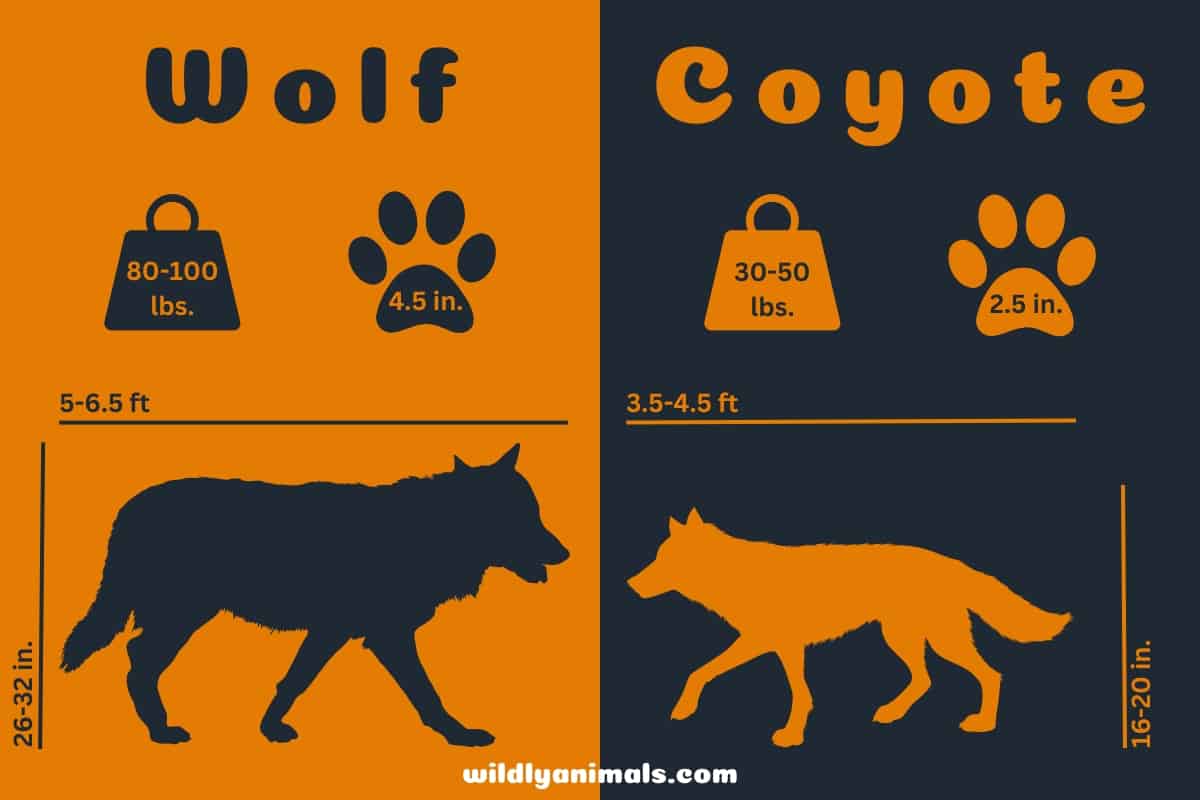
There are a lot of people who intermix coyotes with wolves due to the same coat color of both animals. But there are remarkable differences between these wild animals. First of all, wolves are much bigger than coyotes. Coyote comes in the lean category of animals and only weigh around 30 to 50 pounds while the average weight of the wolf is between 80 to 100 pounds.
It is also quite easy to differentiate between these animals on the basis of their very distinct facial features. Coyote comes with a small nose pad, large ears, and a very narrow snout while wolves have a big very big head but small ears, a thick nose pad, and a very broad snout. The size of their paw is also quite a strong differentiator between these animals. Wolves have very large size paws with nails as long as 5 inches while an adult coyote doesn’t have very large size paws and the nails of the paw could only be as long as 3 inches.
However, a young coyote might show a lot of similarities with wolf pups. You cannot differentiate between them easily due to the same coat color and also the same size of other body parts. That’s where people actually confuse and intermix these animals.
There is another aspect of coyote and wolf. Both of these animals like to hybridize. In the eastern side of North America, it is a very common phenomenon coyote and wolfs interbred a lot and produce hybrid animals which are larger and heavier than their normal offspring. These hybrid animals have been named Coywolves or eastern coyotes.
Coyote size comparison to dog
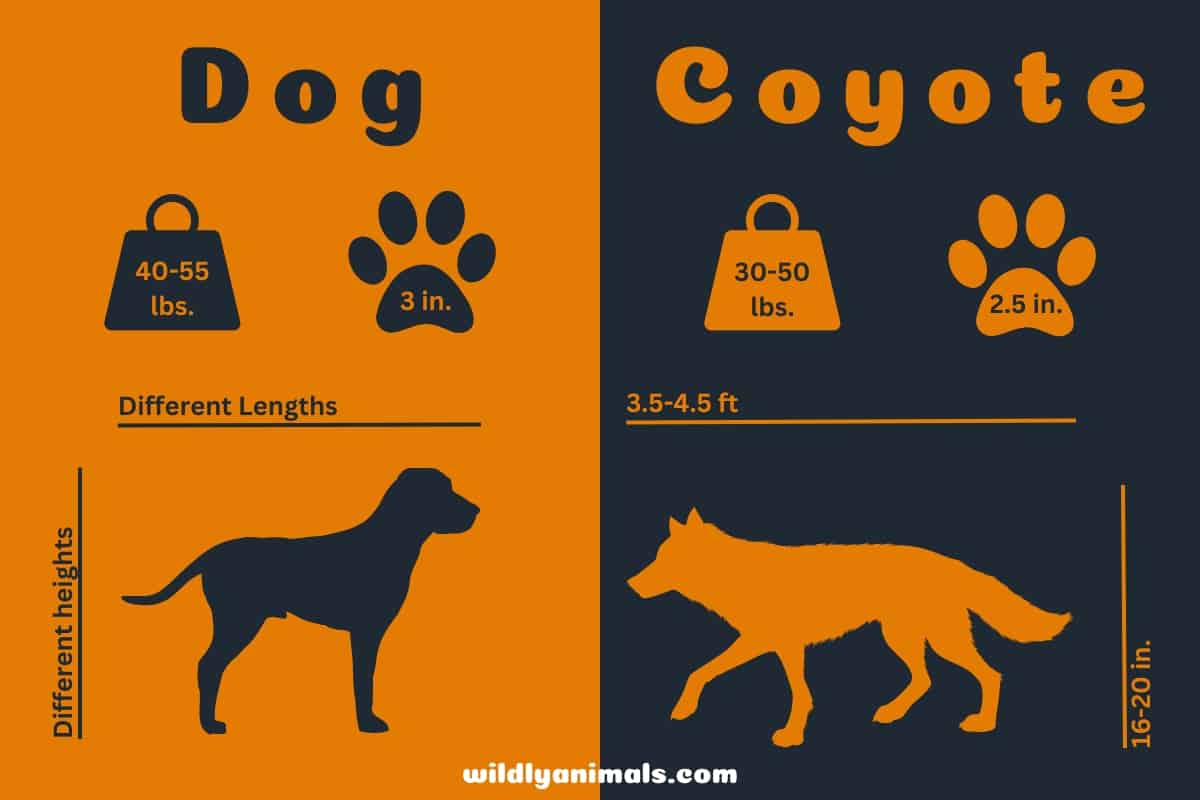
Now, let’s find out how big are coyotes compared to dogs. When it comes to size and specifically weight then coyotes have almost the same body mass as medium-sized dogs. On average, the weight of the dogs lies between 40 to 55 pounds which is almost the same as the weight of the coyotes.
Some of the dogs exhibit extraordinary similarities with coyotes like Australian shepherds, corgis, Dalmatians, Border collie, and English cockers. Both of these animals have almost the same size but these animals also like to hybridize with each other. The offspring produced by this process is called coydogs and these are larger than the average coyote or average dog.
Coyote size comparison with fox
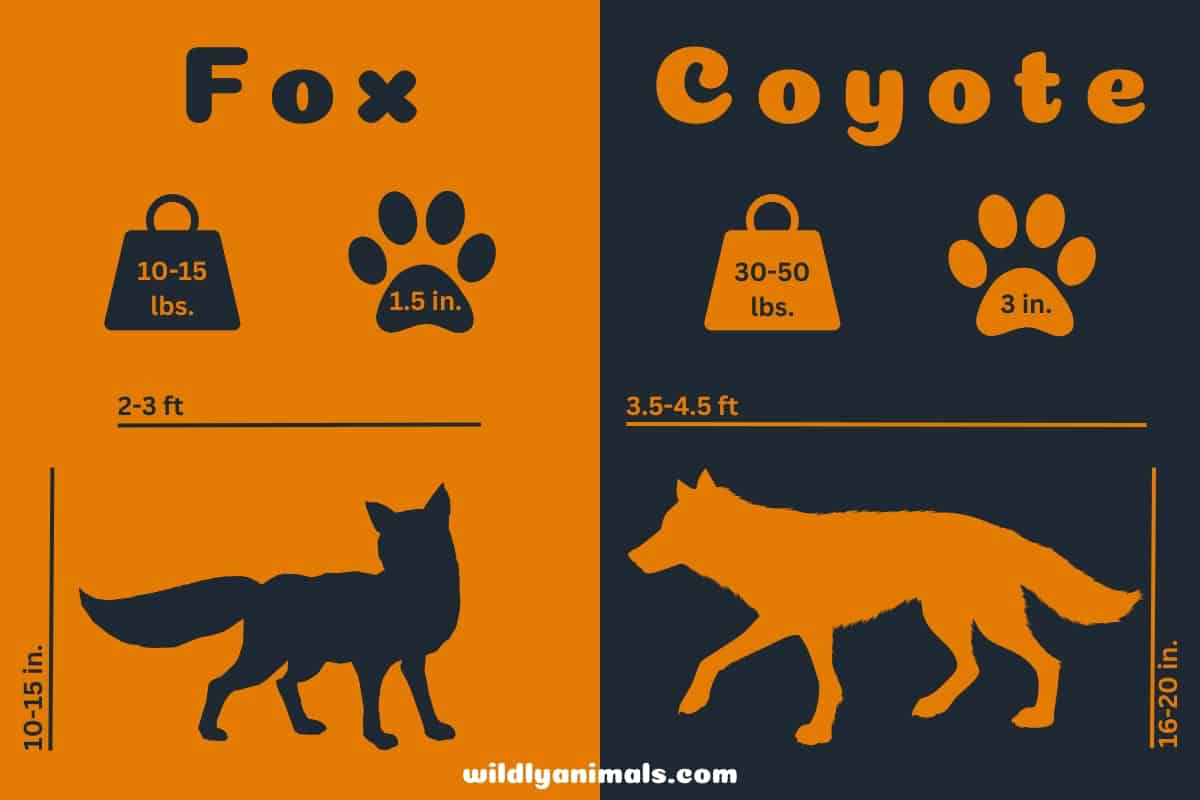
These animals are actually not comparable because there are a lot of differences in terms of their size. They only have some similarities in terms of their face. Coyotes are much heavier, taller, and lengthier than foxes. For instance, foxes just weigh around 15 pounds which is not even half the average weight of an adult coyote.
Coyote also comes with very long limbs and larger paws as compared to foxes. The paw print of the coyote could be easily 3 inches long while the paw print of the fox is just around 1.5 inches.
Frequently asked questions
Conclusion
We have discussed the coyote size in detail. We have explained in detail what could be the smallest and what could be the largest size of a coyote. We have also compared it in detail with other wild animals like wolves, dogs, and foxes due to some coyote similarities with these animals. It has also been explained in detail how the size of a coyote varies on the basis of its health, gender, genes, and age. I think this article is a very comprehensive piece about coyote size. By going through this, you will not even miss any minute detail about the coyote size.

Izzy is an experienced ranch worker who has a passion for exploring nature and getting up close to wildlife. With her connections to various animal organizations, Izzy is well-versed in animal care and rehabilitation.

